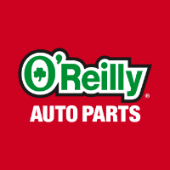-
Welcome to Auto Parts Forum
Whether you are a veteran automotive parts guru or just someone looking for some quick auto parts advice, register today and start a new topic in our forum. Registration is free and you can even sign up with social network platforms such as Facebook, X, and LinkedIn.
Summer Heat Takes a Toll on Your Car’s Battery
-
Similar Topics
-
By GreenGears Auto Limited
Are you looking for affordable and eco-friendly solutions for your car repairs? Look no further than Green Gears Auto Limited! We are a leading provider of high-quality used car parts, specializing in components for electric vehicles (EVs), hybrids, and other environmentally conscious vehicles.
Why Choose Green Gears Auto?
Extensive Inventory: We have a wide selection of OEM (Original Equipment Manufacturer) used parts, including hard-to-find components. Quality Assurance: All our parts are thoroughly inspected and come with a warranty for your peace of mind. Environmentally Friendly: By choosing used parts, you're helping to reduce waste and conserve resources. Affordable Prices: Save money on your car repairs without sacrificing quality. Expert Support: Our knowledgeable team is always ready to assist you in finding the right parts for your vehicle. Our Commitment to Sustainability:
At Green Gears Auto, we believe in a greener future for the automotive industry. We're committed to promoting sustainable practices by:
Reducing Waste: We extend the life cycle of automotive components, preventing them from ending up in landfills. Conserving Resources: Reusing parts reduces the need to manufacture new ones, saving energy and raw materials. Supporting Eco-Friendly Vehicles: We specialize in parts for EVs and hybrids, helping to accelerate the transition to a cleaner transportation system. Join Our Community:
We invite you to visit our website,
link hidden, please login to view, to explore our extensive inventory and learn more about our commitment to sustainability. You can also join our online forum to connect with other eco-conscious car enthusiasts and get expert advice on repairs and maintenance. Call to Action:
Browse our Inventory: Find the parts you need today and start saving money and the planet. Contact Us: Have a question? Our friendly team is here to help. Together, let's build a greener future for the automotive industry!
-
By roybrakepad
If you are an automotive parts dealer, wholesaler, or middleman, finding a best toyota brake pad manufacturer with reliable quality, stable delivery times, timely supply, and a high level of professionalism can be extremely challenging. This task can be even more difficult than finding buyers because the products you purchase must meet the needs of your customers, who, in turn, are responsible to the end users. This makes your position particularly crucial.
To find a highly suitable Toyota brake pads supplier, you need to conduct a thorough investigation and follow a series of steps to determine if cooperation is possible. As a professional brake pads factory with 24 years of foreign trading experience in producing brake pads, we have summarized some key points from our communications with clients. Understanding these points will make your search for a supplier much smoother and more efficient.
Manufacturer or trading companies
First, you need to determine whether you are dealing with a factory or a trading company. Naturally, most buyers prefer to cooperate with factories. There are some questions you need to clarify:
If you want to understand them better, whether through a video call, meeting, or online website, it can be challenging to distinguish between a factory and a trading company. In such cases, if your order volume is significant, I suggest you visit their factory for an on-site inspection.
Tips:Before visiting, you can do some preliminary work to understand their Chinese name, which will help you identify if the factory belongs to them. Generally, they won’t change the company name for such visits.
OEM Toyota brake pads or Aftermarket Toyota brake pads
When choosing between OEM (Original Equipment Manufacturer) and aftermarket brake pads for your Toyota, it’s important to understand the differences. OEM brake pads are made by the manufacturer of your vehicle and are designed to match the specifications of your original brake pads. They offer reliability and a guarantee of quality.
On the other hand, aftermarket brake pads are produced by third-party manufacturers and offer a wide range of options in terms of performance, materials, and price. While some aftermarket pads can exceed OEM specifications, it’s crucial to research and select reputable brands to ensure safety and effectiveness.
Each option has its pros and cons, so consider factors such as budget, performance needs, and warranty before making a decision.
Frenobrakes is an OEM brake pads supplier for Toyota and an aftermarket brake pads manufacturer for Toyota if you have Toyota Permission or your brand, Frenobrakes can meet your requirements, we have 3 brake pads types with covering 98% of brake pads for Toyota vehicles. Just contact us to talk about the details
Toyota Brake pad types
Check if the supplier offers the regular types of brake pads: ceramic, low metallic, and semi-metallic. Different companies have different formulations, which can be distinguished by the color of the brake pads.
Toyota vehicles types
As everyone knows, Toyota models are the most prevalent in the global vehicle market today. Models such as the Toyota Camry, Toyota RAV4, Toyota Corolla, Toyota Tacoma, Toyota Highlander, Toyota Prius, Toyota Avalon, and Toyota Tundra often have different brake pads.
Here’s a tip: don’t provide the exact model to the supplier and ask them to quote the appropriate brake pads for that model. There are too many variations, and even for a single model, the brake pads may differ depending on the production year. Therefore, you need to compile a list of all the brake pad models you require. You can provide them with the brake pad codes, which can be FMSI, OE, TRW, etc., and we can match them to the corresponding company model.
When the supplier provides a quote, check if they have the models you need, or only some of them, or very few. If they have only a few models, I recommend not cooperating with them because you won’t be able to find all the necessary models to better serve your customers. Not all models can be covered, but molds can be made if the volume justifies it.
Ask for Price
Regarding the price of Toyota brake pads, buyers tend to be quite sensitive. You should use your judgment to find a few suitable suppliers for quotes. However, if the price is too low, we do not recommend making a purchase because the quality is likely to be compromised. We understand very well that the basic material costs do not differ significantly. If the price is low, it could mean that the steel backing material is insufficient, or important materials are missing and replaced with cheap fillers. Would you dare to purchase such brake pads? Therefore, the prices generally should not vary much.
Ask for samples
Requesting samples is essential for testing purposes, including road tests and equipment testing (if conditions allow). Here’s a statement you should make clear to the supplier: if we decide to cooperate, you must ensure that the sample quality is the same as the actual order quality; otherwise, you will bear all the losses. This can be written into the contract. This is also the promise we at Frenobrake make to our customers. If a supplier dares to make this promise, you can generally trust that their product quality is reliable.
Check Certificates
Of course, customers from Europe generally require link hidden, please login to view like EMARK, AMECA, and IATF 16949. Even if they don’t specifically ask for these, it is still advisable to check. You need to know that companies with these certifications typically have strong capabilities, whereas small-scale factories usually do not. This can help you eliminate some suppliers. It is essential to verify these certifications as there is always a risk of forgery.
Frenobrake provides a full set of certifications, which is very beneficial for expanding your business. Additionally, we have 983 EMARK models, which generally meet the needs of most buyers.
Communication
Communication allows me to clearly gauge the other party’s level of professionalism. As we seek partners, we place a high value on their expertise. Through communication, we can clearly understand the other party’s professional knowledge. If it is poor, we do not recommend cooperating with them, as they are likely to be unable to adequately address issues that may arise later. This is something we must take seriously.
Trial orders
Start with small orders to evaluate the supplier’s cooperation and coordination. After a period of adjustment and collaboration, you will be able to clearly determine if they are a genuine partner for cooperation.
Toyota brake pad :
link hidden, please login to view -
By Mia
Brake pads are a critical component of the braking system in Toyota vehicles, directly impacting the safety of the driver and passengers. Therefore, their importance cannot be underestimated.
If you are an automotive parts dealer, wholesaler, or middleman, finding a best toyota brake pad manufacturer with reliable quality, stable delivery times, timely supply, and a high level of professionalism can be extremely challenging. This task can be even more difficult than finding buyers because the products you purchase must meet the needs of your customers, who, in turn, are responsible to the end users. This makes your position particularly crucial.
To find a highly suitable Toyota brake pads supplier, you need to conduct a thorough investigation and follow a series of steps to determine if cooperation is possible. As a professional brake pads factory with 24 years of foreign trading experience in producing brake pads, we have summarized some key points from our communications with clients. Understanding these points will make your search for a supplier much smoother and more efficient.
Manufacturer or trading companies
First, you need to determine whether you are dealing with a factory or a trading company. Naturally, most buyers prefer to cooperate with factories. There are some questions you need to clarify:
If you want to understand them better, whether through a video call, meeting, or online website, it can be challenging to distinguish between a factory and a trading company. In such cases, if your order volume is significant, I suggest you visit their factory for an on-site inspection.
Tips:Before visiting, you can do some preliminary work to understand their Chinese name, which will help you identify if the factory belongs to them. Generally, they won’t change the company name for such visits.
OEM Toyota brake pads or Aftermarket Toyota brake pads
When choosing between OEM (Original Equipment Manufacturer) and aftermarket brake pads for your Toyota, it’s important to understand the differences. OEM brake pads are made by the manufacturer of your vehicle and are designed to match the specifications of your original brake pads. They offer reliability and a guarantee of quality.
On the other hand, aftermarket brake pads are produced by third-party manufacturers and offer a wide range of options in terms of performance, materials, and price. While some aftermarket pads can exceed OEM specifications, it’s crucial to research and select reputable brands to ensure safety and effectiveness.
Each option has its pros and cons, so consider factors such as budget, performance needs, and warranty before making a decision.
Frenobrakes is an OEM brake pads supplier for Toyota and an aftermarket brake pads manufacturer for Toyota if you have Toyota Permission or your brand, Frenobrakes can meet your requirements, we have 3 brake pads types with covering 98% of brake pads for Toyota vehicles. Just contact us to talk about the details
Toyota Brake pad types
Check if the supplier offers the regular types of brake pads: ceramic, low metallic, and semi-metallic. Different companies have different formulations, which can be distinguished by the color of the brake pads.
Toyota vehicles types
As everyone knows, Toyota models are the most prevalent in the global vehicle market today. Models such as the Toyota Camry, Toyota RAV4, Toyota Corolla, Toyota Tacoma, Toyota Highlander, Toyota Prius, Toyota Avalon, and Toyota Tundra often have different brake pads.
Here’s a tip: don’t provide the exact model to the supplier and ask them to quote the appropriate brake pads for that model. There are too many variations, and even for a single model, the brake pads may differ depending on the production year. Therefore, you need to compile a list of all the brake pad models you require. You can provide them with the brake pad codes, which can be FMSI, OE, TRW, etc., and we can match them to the corresponding company model.
When the supplier provides a quote, check if they have the models you need, or only some of them, or very few. If they have only a few models, I recommend not cooperating with them because you won’t be able to find all the necessary models to better serve your customers. Not all models can be covered, but molds can be made if the volume justifies it.
Ask for Price
Regarding the price of Toyota brake pads, buyers tend to be quite sensitive. You should use your judgment to find a few suitable suppliers for quotes. However, if the price is too low, we do not recommend making a purchase because the quality is likely to be compromised. We understand very well that the basic material costs do not differ significantly. If the price is low, it could mean that the steel backing material is insufficient, or important materials are missing and replaced with cheap fillers. Would you dare to purchase such brake pads? Therefore, the prices generally should not vary much.
Ask for samples
Requesting samples is essential for testing purposes, including road tests and equipment testing (if conditions allow). Here’s a statement you should make clear to the supplier: if we decide to cooperate, you must ensure that the sample quality is the same as the actual order quality; otherwise, you will bear all the losses. This can be written into the contract. This is also the promise we at Frenobrake make to our customers. If a supplier dares to make this promise, you can generally trust that their product quality is reliable.
Check Certificates
Of course, customers from Europe generally require link hidden, please login to view like EMARK, AMECA, and IATF 16949. Even if they don’t specifically ask for these, it is still advisable to check. You need to know that companies with these certifications typically have strong capabilities, whereas small-scale factories usually do not. This can help you eliminate some suppliers. It is essential to verify these certifications as there is always a risk of forgery.
Frenobrake provides a full set of certifications, which is very beneficial for expanding your business. Additionally, we have 983 EMARK models, which generally meet the needs of most buyers.
Communication
Communication allows me to clearly gauge the other party’s level of professionalism. As we seek partners, we place a high value on their expertise. Through communication, we can clearly understand the other party’s professional knowledge. If it is poor, we do not recommend cooperating with them, as they are likely to be unable to adequately address issues that may arise later. This is something we must take seriously.
Trial orders
Start with small orders to evaluate the supplier’s cooperation and coordination. After a period of adjustment and collaboration, you will be able to clearly determine if they are a genuine partner for cooperation.
Find some toyota brake pads suppliers
Collaborate with multiple suppliers and compare them to eliminate a few. You can also keep some as backup options in case any supplier cannot fulfill an order due to special circumstances. This way, you won’t be left in a passive position. I believe this is something everyone should consider.
The best toyota brake pads manufacturer in 2024
Akebono Brake Corporation
Known for its advanced ceramic technology, Akebono provides high-quality OEM and aftermarket brake pads. Their products are recognized for low noise and dust, and superior braking performance. Brembo
A global leader in braking systems, Offers premium brake pads with excellent stopping power. Their products are widely used in high-performance and luxury vehicles, including various Toyota models. Bosch
Bosch brake pads are known for their durability and consistent performance. They offer a range of options including semi-metallic, ceramic, and organic brake pads suitable for Toyota cars.
link hidden, please login to view With 24 years of experience, Frenobrake is recognized for its comprehensive range of brake pads and certifications. They provide both OEM and aftermarket solutions with a focus on quality and customer satisfaction. TRW Automotive
Part of the ZF Group, TRW offers high-quality brake pads with a focus on safety and performance. Their products are widely used in the automotive industry and come with various certifications. If you are new to the industry, finding the best Toyota brake pad manufacturers and suppliers may not be an easy task. You need to take your time, do a lot of research and ask, and get the best deal for your clients.
In addition, you need better relationships and contacts to help you get the best Toyota vehicle brake pads, which will make you a reputable dealer and, at the same time, ensure some good profits. Remember to check the brake pads of all Toyota vehicles.
If you can learn more about brake pads, please click this website:
link hidden, please login to view
-




Recommended Posts
Join the conversation
You can post now and register later. If you have an account, sign in now to post with your account.
Note: Your post will require moderator approval before it will be visible.